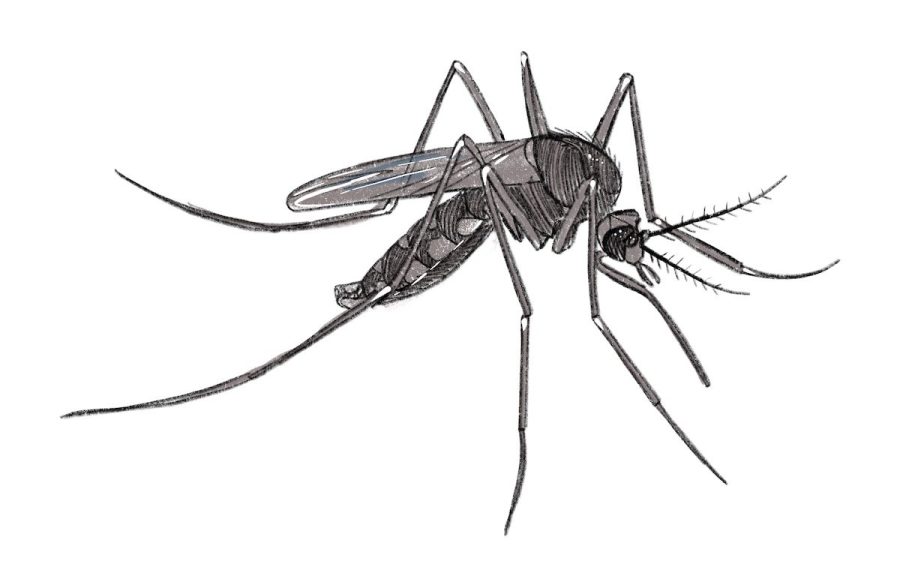Genetically modified insects could buzz throughout Central California counties this summer.
The U.S. Environmental Protection Agency recently approved the deployment of gene-edited mosquitos to four California counties, not including Santa Clara County. If approved by the California Department of Public Health, the release will happen this summer, potentially releasing billions of modified insects over a two-year period to decrease the population of the Aedes aegypti mosquito in order to prevent the spread of diseases.
According to the California Department of Public Health, after first being detected in 2013, Aedes aegypti have spread to 23 California counties as far north as Sacramento and as far south as San Diego. Santa Clara Vector Control Community Resource Specialist Beverley Perez said the mosquito has not yet spread to Santa Clara.
“There is a chance that it could be introduced to Santa Clara County in the near future, as it has spread quite rapidly in California,” Perez said.
UK-based biotechnology company Oxitec, which researches gene-edited insects to assist in insect control, developed the Aedes aegypti species. Rajeev Vaidyanathan, Director of US Operations for Oxitec, said the modified Aedes aegypti utilizes a self-limiting gene technology that controls the size of the population by preventing female mosquitoes from growing past the larvae stage.
“The gene causes lethality in the larvae of females. When all the eggs hatch, all the female larvae die, but the male larvae develop, and when they mate with local invasive females, they pass the gene to the female, whose female progeny die,” Vaidyanathan said. “Thus, you cut the population by eliminating one half the larvae, and that continues for generations.”
Vaidyanathan also said Aedes aegypti have unique characteristics that make them dangerous to humans, creating a need for the deployment of the gene-editing technology.
“Aedes aegypti is an invasive species in most of the world, certainly in North and South America and all of Asia,” Vaidyanathan said. “It’s unique among mosquitoes in that it is intimately associated with humans and prefers feeding on humans. It also has a very narrow flight radius which means it will also stay within 200 feet of where it was born, and it thrives in small sources of stagnant water such as clay pots.”
If approved by a state regulating body, the project would be deployed at the Delta Mosquito and Vector Control District in Visalia. Dr. Mustapha Debboun, General Manager of the Delta MVCD, said he supports the new project.
“With mosquito and vector-borne diseases a growing concern in California, we see Oxitec’s technology as an important additional option to control the invasive Aedes aegypti mosquito,” Debboun said. “We look forward to working in partnership with Oxitec and have been impressed with results from their previous projects.”
Debboun also said Oxitec will deploying the genetically modified mosquitoes, not Delta MVCD directly.
“The project is not ours. It belongs to Oxitec; we are just collaborating with them,” Debboun said. “We will be providing them with some data about where the populations are, and they will be collecting their own data.”
However, many residents fear that the largely untested technology could have devastating impacts on the California ecosystem. Dana Perls, Food and Technology Program Manager at Friends of the Earth, said genetically modified mosquitoes such as Oxitec’s Aedes aegypti have unknown environmental effects.
“Scientists have found genetic material from (gene-edited) mosquitoes in wild populations at significant levels, which means (gene-edited) mosquitoes are not sterile,” Perls said. “(Gene-edited) mosquitoes could result in far more health and environmental problems than they would solve.”
And Perls said she thinks there are numerous problems involved with the upcoming release.
“This would be the first (gene-edited) vector released in California and essentially with no independent review, no appropriate regulations and no testing for human impacts,” Perls said. “All of this has been tested by a biotech company well known for secrecy.”
But Debboun said the project has already been approved by the EPA.
“This is just negativity, people being sensational. I follow science and what the regulatory organization approves,” Debboun said. “If they approve it, who are you and me to say that we shouldn’t do it? If we listen to everyone, then that isn’t science.”
Still, Perls isn’t convinced.
“The EPA is a highly problematic agency because it is subject to company influence, and part of the problem is that our regulations are incredibly out-of-date,” Perls said.
Despite the concerns of environmental groups, if the Oxitec project succeeds with the Delta MVCD, Perez said Santa Clara may consider implementing a similar release as part of its arsenal against mosquito-borne diseases.
“(Oxitec mosquitoes) would definitely be something worth looking into,” Perez said. “We would have to see the results from counties that are implementing it currently.”



